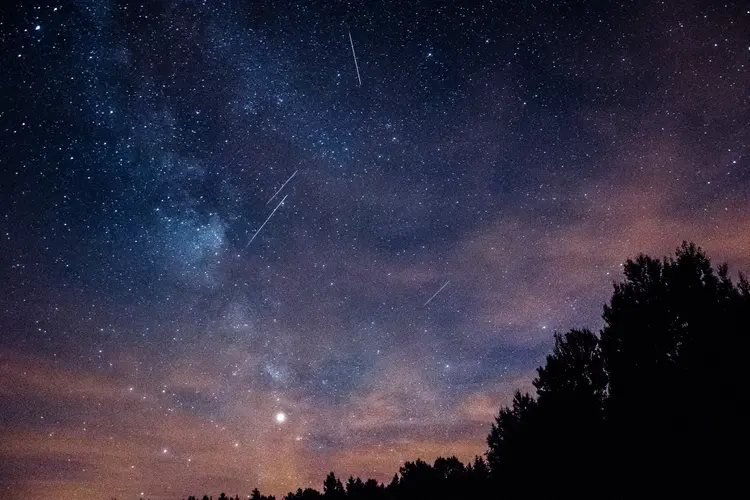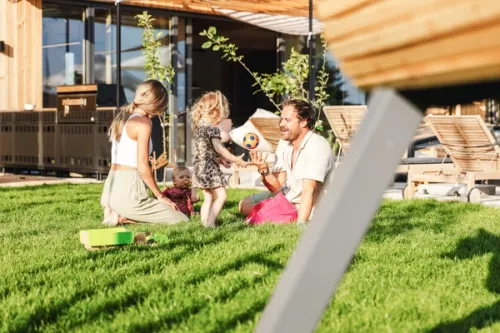Havelland's notable cities
Postsdam
Family fun
Themed parks
Don't miss
Natural landscape
By the Staycation Collection team
A spotlight on Havelland, Brandenburg

From stargazing in an official dark zone to an adventure village for strawberries; this is what to do in Brandenburg’s Havelland
Havelland is one of the most beloved areas of Brandenburg and one of the most visited as this is where Potsdam is located. But beyond Brandenburg’s capital with its numerous palaces, expansive Prussian gardens and idyllic Dutch Altstadt, what does Havelland have to offer and why should you spend your time exploring it?
As you may have guessed, Havelland is named after the river Havel which runs through the region before joining the river Elbe. Because of that, there are a lot of watersports on offer, from yachting to canoeing, as well as opportunities for spotting birds who rest along the river on their migratory paths.
The area’s natural beauty inspired works of literature, poetry and art, most notable are the works of Prussian author and poet Theodor Fontane (look up Herr von Ribbeck auf Ribbeck im Havelland). I love soaking up the area’s nature by cycling along the Havelland Radweg, a bike path that runs alongside the river and eventually leads you to the former training ground of flight pioneer Otto Lilienthal who made his first flight attempts in Stölln.
And while Havelland is so beautiful, it’s never hugely crowded and really makes you feel as if you’re a million miles from the city - something we all need right now, huh!?
Don't Get Fomo
Fernweh Newsletter
Discover Germany, beyond its tourist spots: get adventure tips and day trip inspiration straight to your inbox. Every month, for free. Sign up so you don’t miss out.



Our favourite things to do in Havelland
Sternenpark Westhavelland
In Germany, there are three exceptional places to stargaze, and the Naturpark Westhavelland (Brandenburg) is just a short train ride from Berlin. It’s a place that is protected by the International Dark Sky Association (IDA) for being a natural place with optimal stargazing conditions. Here, when it’s not cloudy(!), you can see the Milky Way with your bare eyes.
Read more about how to stargaze in German.
Rules for stargazing: There are a few unspoken rules you should keep in mind when visiting one of these dark places, but the main one to remember is don’t use a flashlight or your phone’s light. Make sure you have a light with a red filter. Try to arrive before sunset and set up to avoid the difficulties of navigating in the pitch-black - plus you can often see the planets at dusk.
Brandenburg an der Havel
Nestled on the banks of the River Havel, flanked by Westhavelland Nature Park, this city is impossibly picturesque in both its location and looks, as it boasts historic charm and beautiful buildings that are a textbook example of perfect medieval Gothic red-brick architecture.
While there, visit the Church of St. Gotthardt (built in 1140) where there’s a tapestry depicting a unicorn hunt, the National Archaeological Museum (located in a refurbished medieval Dominican Friary), and Friedenswarte (the highest building in the city) where, from its observation deck, you can get a birds-eye view of the city.
Rathenow Optics Park
Who doesn’t love obscurely themed parks? And the Rathenow Optics Park is no exception! It’s been designed to provide visitors with an optical sensation. Expect colour pyramids and rainbow-coloured flower beds, musical colour spaces, raft rides and thousands of blossoms.
The world's largest (and still fully functional medial telescope) can be found here (German: “Brachymedial-Fernrohr”), as well as a lens that was made in Rathenow for Brandenburg’s tallest lighthouse (the old town has a historical connection with opticians and lenses!).
Hike to Aussichtsturm Finkenberg
Surrounded by forest is this small observation tower on the southern edge of the Döberitzer Heide. As you climb the spiral staircase you're given a fantastic view over the treetops. If you look eastwards, you can see Teufelsberg. without binoculars.
I love this walk - Döberitzer Heide to Aussichtsturm Finkenberg Loop from Krampnitz - as listed on komoot, which takes in the area's beautiful natural surroundings.


Schloss Ribbeck
This is an important site for those interested in German poetry, for it's the place that Fontanein sang about in his famous poem “Herr von Ribbeck auf Ribbeck im Havelland” (more specifically, about a pear tree). Sadly the tree is no longer there, it fell victim to a storm, but the castle - a neo-baroque house - which was built in 1893 was restored after the fall of the GDR.
On the occasion of the 200th birthday of Theodor Fontane, the Fontane Museum was opened in Ribbeck Castle (2019), plus there’s a restaurant serving food and a number of beautiful hiking routes leading out of the village.
Karls Erdbeerhof
You’ve all seen the strawberry huts in Berlin with the little cartoon bear smiling happily, right?! Well, the bear is called Karl and he has an adventure village just a stone’s throw from Berlin.
It is, of course, a strawberry themed wonderland, where you can ride tractors, learn how jam is made and climb on haystacks, as well as pick your own strawberries. Oh, and don’t forget to check out the collection of coffee pots - they’re listed in the Guiness World Record book...
Barberini Museum
Yes, ok this is technically in Potsdam, but this lesser-known museum regularly features exceptional exhibitions of impressionist and Baroque painters, from Monet and Picasso to Rembrant and Richter. The museum is housed in the Palais Barberini, a building built over 250 years ago by Frederick the Great, at the edge of the old market square, Alter Markt, in the historic center of the city.
You’re at the edge of the Dutch Quarter, so after a visit it makes sense to explore the beautiful architecture and perhaps even pay the UNESCO World Heritage site of the Potsdam Castles a visit, even if just to stroll through their impressively landscaped gardens.
Havelland Radweg
The 371-kilometre Havel cycle path leads from its source in Ankershagen in the Mecklenburg Lake District to its mouth in the Elbe near Gnevsdorf in the Prignitz District. The cycle path is so beautiful, varied and easy to cycle that it is recommended in the ADFC brochure "Discover Germany by bike".
From Berlin, take the west route to soak up the Havelland's forest and water scenes. Follow the route and you'll get to Brandenburg on the Havel. The route can be viewed here.


